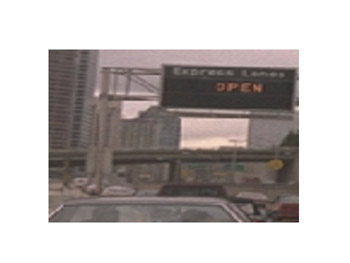Introduction to MPLS Traffic Engineering
|
| < Day Day Up > |
|
There is a road in Seattle, Washington, that I drove years ago, called Interstate 5. From the suburb of Lynnwood, I could get on the highway and drive into the city, getting off at any exit. If I wanted to go from Lynnwood into the heart of Seattle, I could get onto the express lane. This express lane is like an MPLS tunnel (see Figure 5.1). If my driving characteristics matched the requirements of the express lane, I could use it.

Figure 5.1: Express Lane
Taking this illustration further, let’s say that I enter the freeway and want to drive into the heart of Seattle. I might ask myself, “Which is faster: the express lane or the regular highway? Is there an accident on the express lane? Is the standard freeway faster?”
It would be nice to have a traffic report to use in making my decision, but traffic reports over the radio are not given in real time; by the time that I find out about a slowdown, I will be stuck in it. I could make the mistake of entering the express lane just as an accident happens 5 miles ahead, and I’d be trapped for hours.
It would be great if I had a police escort. The police would drive in front of me; in the event of an accident or a slowdown, they would take me on a detour of similar quality to ensure a timely arrival at my destination.
On the Internet, we have thousands of data roads that are just like Interstate 5. With MPLS, we have a road that is dedicated to traffic with certain characteristics—much like the express lane. To ensure that the express lane is available and free of congestion, we can use protocols like CR-LDP and RSVP-TE. Currently, the most popular of these two protocols appears to be RSVP-TE because it acts like a police escort to ensure that any incoming traffic can be rerouted around the problem area.
When looking at traffic patterns around the country, we see that freeways often experience congestion and delays, whereas other roads are open and allow traffic to flow freely. The traffic is simply in the wrong area. Wouldn’t it be nice if the highway engineers and the city planners could find ways to route heavy traffic to a road that could handle the traffic load and adjust the road capacity as needed to accommodate traffic volume? This is the goal in traffic engineering with MPLS.
|
| < Day Day Up > |
|
EAN: 2147483647
Pages: 138